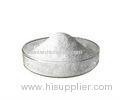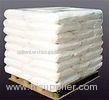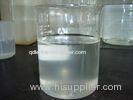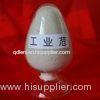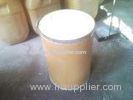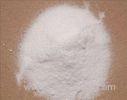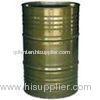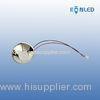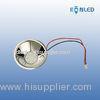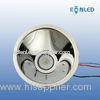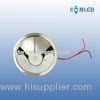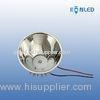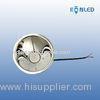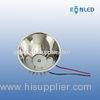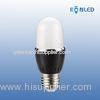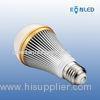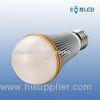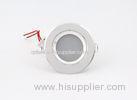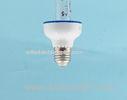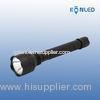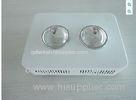|
Jiangsu Tianxin International Co., Ltd.
|
Acrylic Rubber fluorinated ethylene propylene
| Place of Origin: | Zhejiang, China (Mainland) |
|
|
|
| Add to My Favorites | |
| HiSupplier Escrow |
Product Detail
Acrylic Synthetic Rubber Copolymerized Macromolec
Acrylic Synthetic Rubber Copolymerized Macromolecule Elastomer , Ozone-resistance , Ageing-resistance
Quick Detail:
Acrylic rubber is a copolymerized macromolecule elastomer which is mainly constructed by acrylic alkyl ester, and a small amount of monomer possesses active groups through crosslinking reactions. Moreover, its main and side chains are saturated by carbon chain, polarity ester group, respectively. Owing to the special structure, it possesses many excellent characteristics, such as heat-resistance, ageing-resistance, oil-resistance, ozone-resistance and resistance to ultraviolet, etc. Particularly, its mechanical properties and processing performances are better than those of fluororubber and silicone rubber; And, its heat, ageing and oil resistances are better than those of nitrile rubber. ACM is widely used in all kinds of high temperature and oil resistant environments.
Description:
ACM contains many varieties. Mainly, its copolymerization monomer can be divided into three kinds of monomers, such as, low temperature oil resistance monomer and vulcanization point monomer, respectively
2.1 Low oil resistance monomer:The alcoxyl ether ester is used to prepare low oil-resistance monomer in traditional copolymerization. And the cold-resistance of the ACM is below -30 . Afterwards, the acrylic methoxyl ethyl ester is selected as comonomer to reduce the operating temperature in the industrial production.
2.2 The crosslinking reaction of monomer copolymerization is used to solve sulfide problems. Generally, the monomer content of the vulcanization point is less than 5%. The processing vulcanization systems are different each other depending on the different crosslinking monomer. According to this, thus it can be divided into chlorine polyamines crosslinking, including nonchloride polyamines crosslinking, self-crosslinking, carboxylic acid ammonium salt crosslinking and soap crosslinking types, and so on. In addition, there are special acrylate rubbers (containing fluorine and thermoplastic acrylic ester rubber types), etc. Vulcanization systems are different each other, containing different crosslinking monomer acrylate rubbers, determining those processing characteristics changes, accordingly.
2.3 Mainly monomer:The main monomers of the ACM contain acrylic acid methyl ester, ethyl acrylate and butyl acrylate and acrylic acid -2-ethyl caproic ester, etc. With the carbon numbers of the side ester base increasing, cold and water resistances are improved, respectively. However, oil resistance and the manufacturability are reduced. Therefore, ester base should not be more than butyl ester. Actually, ethyl acrylate and butyl acrylate are used mainly in the preparation of the monomer.
The ethyl acrylate-based rubber possesses good oil-resistant and heat-resistant performances; However, the cold resistance of the -based rubber are good. Actually, the performances of the materials could be adjusted by the above two monomers.


Applications:
The saturability of structure and the polarity of the ester base side chains of acrylate rubber determine its main application properties. Namely, heat-resisting, oxygen aging-resistance and oil-resistance performances are excellent, but cold resistance, water resistance and solvent resistance performances are poor.
3.1 The polarity ester of the base side chain make it differ from the solubility parameters of the varieties of the oils, especially for mineral oils, so it shows good oil-resistance. One is an important characteristic property of acrylate rubber. Acrylate rubber is immersed in hot oil shielding from ozone and oxygen long-term, therefore, it is more stable than in the hot air. Finally, the acrylate rubber has similar oil-resistance with fluorine rubber in the oil at the 150 , second only to fluorine rubber at the higher temperature.
The oil-resistance of the acrylate rubber is close to NBR with ACN (ACN = 33 ~ 35%) content at room temperature, and is better than that of CR, ECO and SILICONE. However, its performance is far better than NBR in the hot oil.
3.2 Heat resisting, oxygen aging resistance and oil resistance: The main chain of acrylate rubber is made up by saturated hydrocarbon composition and hydroxyl groups. It possesses more stability than the dienes rubber of the main chain with double bonds. Especially, the heat resisting oxygen aging performance of the acrylate rubber is good. Its operating tempature is higher by 30 to 60 than nitrile rubber. Its maximum operating temperature is up to the 180 , even it could reach 200 or so, under intermittent or short time using. The heat aging behavior of the acrylate rubber is different from thermal degradation and heat curing types, but it falls between thermal degradation and heat curing. During aging process, the rubber tensile strength and elongation declines firstly, and then the tensile strength increases, gradually becomes brittle and aging. Compared with side chains of the macromolecular, the main chain processes more stable thermal instability. Owing to the stability of the main chain, stress relaxation and deformation phenomenon are notable when rubber endures elongation or compression deformation at high temperature.
|
heavy oil 149C*70H |
NBR |
AR |
|
retention tensile strength,% |
0 |
65 |
|
elongation retention rate,% |
2 |
71 |
|
HD chang |
+20 |
+17 |
|
V.C Change |
+1.6 |
+9.4 |
|
180°bend |
CRACK |
NO CRACK |
AR has similar oil-resistance with FKM below 150 oil, second only to FKM at the higher temperature of the oil. In addition, it possesses resista







